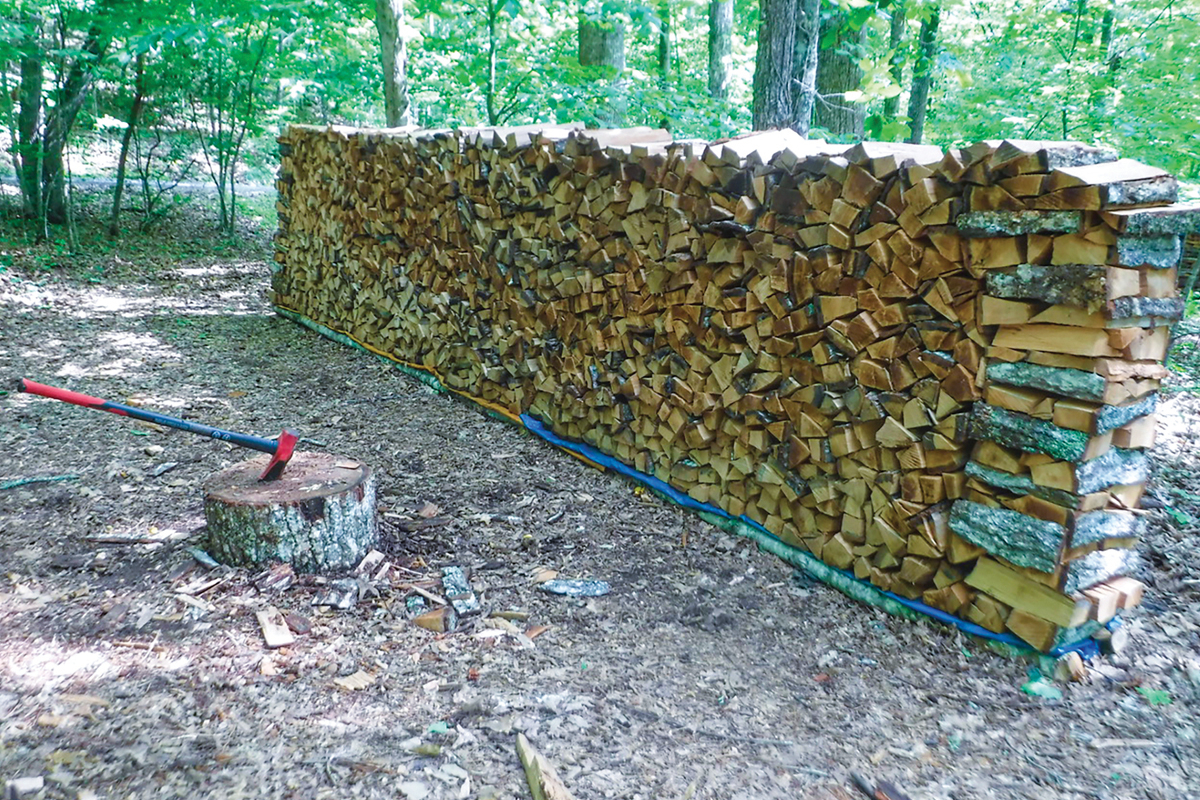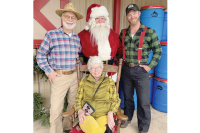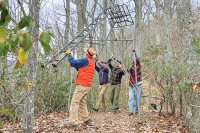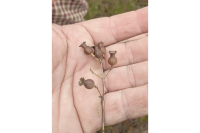Up Moses Creek: 2 a.m.
 A red oak has been turned into a new shape of tree. Burt Kornegay photo
A red oak has been turned into a new shape of tree. Burt Kornegay photo
A sudden, loud crack came through the open bedroom window, startling me out of sleep — “What was THAT?” Then came a cascade of pops and snaps that told me a tree was falling, a big tree, to judge by how long the noise lasted. Some tall wooden thing weighing many tons had just crashed.
I walked out with a flashlight but saw nothing lying in the yard. My light fell on our dog, Barnes. Seventeen years old and nearly deaf, he was curled up in his doghouse, asleep. Some guard dog!
Back inside, I saw that Becky was sleeping soundly too — although her hearing is good. Yesterday afternoon she’d set a box with summer clothes at the foot of the bed, planning to unpack it later. As I got back under the cover, she stirred enough to ask if I’d pushed it across the floor and made a noise. Some guard wife!
I found the toppled tree in the morning, a southern red oak (Quercus falcata). It was in the woods below the house. I knew that particular oak because deer bedded under it, leaving the shape of their forms in the dried leaves around the trunk. To be accurate, my eye was drawn first to where the familiar, sheltering oak no longer was (Quercus nada). The tree had been replaced by a single streak of white, looking like a blaze in the woods. The blaze turned out to be a head-tall splinter of fresh wood still attached to the roots, and it was the only part of the tree still standing. The rest of the tree — trunk and crown — stretched downhill from it in a tangle of branches and leaves on the ground.
The oak had risen 20 feet clear before it forked into two wide-spreading limbs. When the tree came down, the limbs had swept up smaller trees and a pitch pine, which snapped off about waist high. The drawn-out racket at 2 a.m. had been an armful of trees being broken and uprooted. When a big tree falls, it takes the little ones in its path down with it.
A closer look told me the vertical white splinter had been the one remaining strip of sound wood in the trunk, and the initial crack that woke me up had been when it snapped apart. The sound marked the end of its soundness.
Related Items
I’d heard the like before. On a backpacking trip I was guiding years earlier in the Joyce Kilmer-Slickrock Wilderness, we were relaxed around the campfire one night when a report as loud as a .22 caliber rifle went off, making everyone jump. Our flashlights lit up an exposed streak of fresh wood running up the trunk of an old black locust tree. The tree was leaning toward the campsite, so we moved our tents.
The rifle-like pops of ripping wood kept waking us every half-hour or so. The locust leaned a bit more each time, and the white streak widened. But the tree did not fall that night. Two weeks later, hiking that way with another group, I came upon it lying across the campsite.
When the red oak fell at 2 a.m., I walked out with my flashlight under a sky full of stars. No wind or pounding rain had brought it down. The tree had been its own undoing. Rot had slowly spread in the base of its trunk. The only green wood remaining had been the plank-sized strip that still rose from the roots.
I was surprised that such a small support had held up the tree and nourished the crown for as long as it did. But when the crown leafed in the spring, the weight must have become unbearable. I imagined one more leaf unfurling from the bud, and with that slight addition, the scales tipped, the last strip of solid wood gave. As goes an oak, so sometimes goes a country.
Even with the rot, the tree still held a winter’s worth of firewood, so I sawed it up and stacked the pieces into a new shape of tree: two cords. We would sleep red-oak warm! Because of the rot in the core, I couldn’t count all the annual growth rings and figure out the year the tree had taken root. All I know for sure is when it fell.
(Burt and Becky Kornegay live in Jackson County. Burt is author of the trail map “A Guide’s Guide to PanthertownValley.”)













